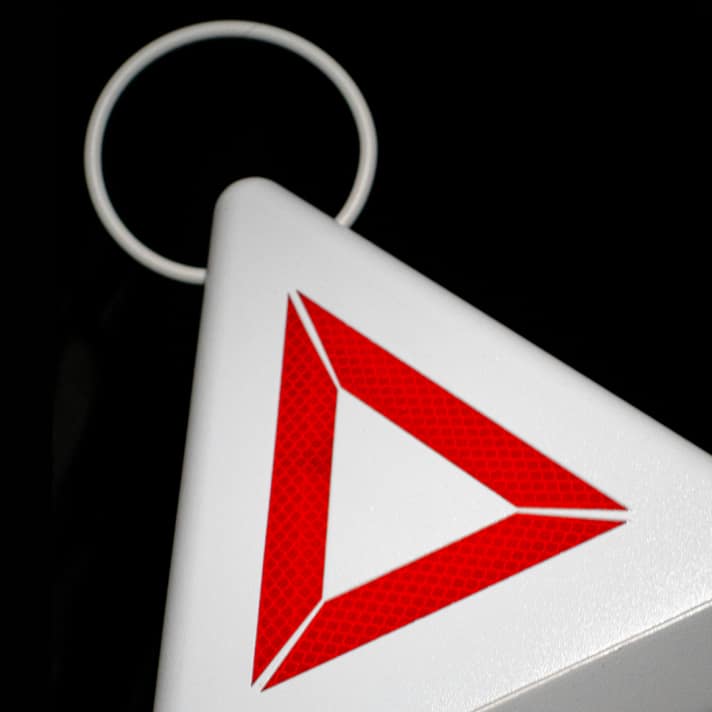
The anchor buoy in the shape of a double tetrahedron is attached to the ground bar with a line using a snap hook; it regulates the length of the connection itself and thus remains taut. A receiver is built into the plastic buoy, which provides position information accurate to the metre and works with the GPS, Glonass, Beidou and Galileo systems. A transmitter is also installed, which establishes radio contact with a receiver unit on board. This in turn connects to a smartphone or tablet via Wi-Fi. An anchor alarm is triggered if the buoy moves from its position and is emitted directly from the control unit even if the smartphone battery runs down.

Control and settings are made in the system's own app. Anchor alarms, which use the GPS position of the mobile phone to report movement beyond self-defined limits, perform a similar function. The difference to the complex system called Vision Anchor is that the anchor buoy reports the movement of the anchor in real time, not the boat. The ground anchor can therefore be perfectly controlled independently of the boat. Even when digging in, for example, the skipper can see when the anchor is taking hold. With purely smartphone-supported alarms, a certain swinging circle of the boat must be tolerated. Vision Anchor, on the other hand, immediately indicates a change in the anchor position.
One disadvantage of Vision Anchor is the high price. The buoy with line mechanism and transmitter, the base station and the app cost just under 1,000 euros, while some app-only alarms are already available free of charge. The buoy, which is fitted with reflective strips, weighs three kilograms and is 52 centimetres high.
